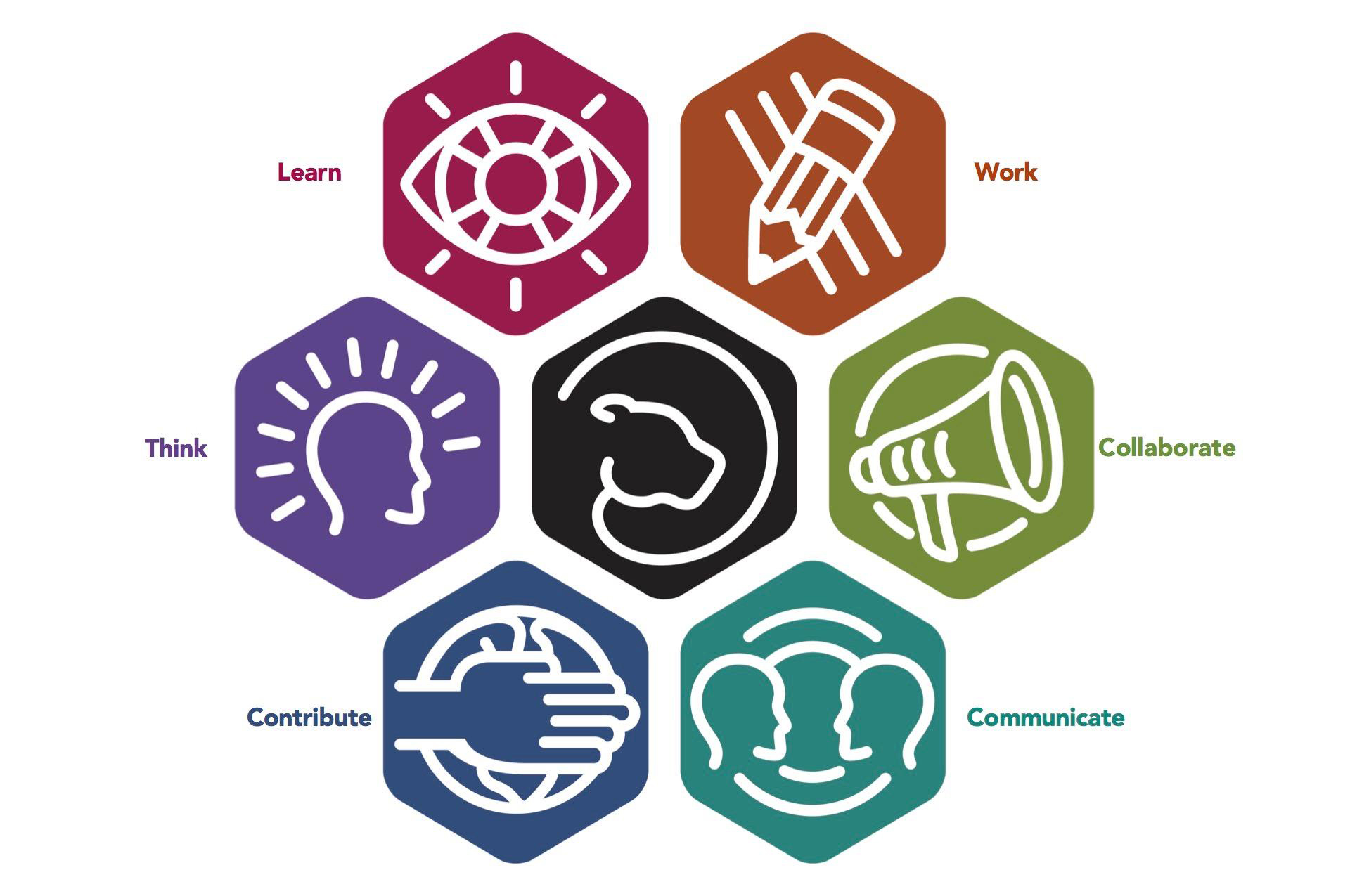In an ever-changing world with ever-changing career possibilities, schools need to prepare students to take on any challenge. Equipping every student with the academic and social-emotional skills to think, learn, work, collaborate, communicate, and contribute now and throughout life requires a personalized approach.
Katherine Smith School, an elementary New Tech Network school in San Jose, CA, is now in the third year of a radical reinvention from a traditional test-driven environment into a 21st century school. The framework for this shift comes from New Tech Network, with curriculum, culture, and technological tools all playing a key role in our design. Students are at the center with a curriculum that engages, tech tools that enact, and the strong school culture that empowers. Within each of these circles is the flexibility to meet the specific needs of our community.

Culture Comes First
Before the frameworks and tools, the redesign process starts with culture. Previously, our school was driven by a mindset that defined success by just one measure: student performance on tests. But the only data point on the rise was suspension rate as students became increasingly disconnected from school.
The first action item was to redefine our mission from achieving success on “the test” to success in life. That meant creating a “no excuses” culture and an environment where students aspire to go to college.
Adults needed to embrace significant cultural changes as well, and each one committed to a set of core beliefs:
- We believe our students can and will achieve at high levels;
- We operate in a collaborative, shared leadership model;
- We take risks and are innovative in our approach to meet the needs of our students.
A culture of empowerment is built around trust and makes risk taking, innovation and creative problem solving possible. Katherine Smith teachers, students and even parents work together to design solutions to solve any problem we are facing.
We Don’t Have a Pencil Lab

Another key aspect of the New Tech framework is having the technological tools to enact learning. Students and teachers in a modern classroom need to access information, create high-quality work and support a personalized instructional approach.
A sixth grader, prior to our transformation, once remarked that “technology in the classroom was only used by teachers.” The only time when students had access was during their allotted period in the computer lab.
But a 21st century classroom needs devices in the hands of students. When we redesigned our school, we made a significant investment in technology. While we could not go 1:1, we added iPads carts at every grade and two additional laptop carts to give greater access to students. We later added three Chromebook carts to keep our device choice diverse.
Like grabbing a pencil when it’s time to write, technology tools need to be near the learning—not locked away in a lab. Ubiquitous access is essential to any work or project, whether it’s conducting research, making a movie or drafting an essay.
Project-Based Learning That Engages
Engagement comes when curriculum is relevant and delivered through meaningful experiences. Like all New Tech Network schools, we use a project-based learning model. Our design follows the Buck Institute for Education’s model where all work is aligned around driving questions that create an authentic need for inquiry.
A key aspect of the personalization is asking an open-ended driving question and offering a variety of ways that students can address them. Katherine Smith projects include group challenges, each of which require collaboration, critical thinking, creativity and communication. Here some sample projects and the important elements:
| Grade | Title | Driving Question | Project Deliverables |
|---|---|---|---|
| K | What Do the Letters Say? | How can we help the preschoolers and our community become readers and writers by learning the letters sounds? | Letter video for preschoolers to use Letter art "A is for ___" writing about the letters |
| 2 | Kid Inventors | How does an inventor use knowledge of physics to create a machine? | Simple machine invention that serves a purpose Expository paragraph including the name of the invention, the simple machine it uses, how it works, and why someone would want to use it Oral presentation at the mini-tech museum |
| 3 | Unique Habitats | What makes a habitat unique? | Write an ABC book showing unique features of a habitat Write a poem Wood cut-out of a plant or animal from a habitat mounted as part of a permanent installation |
| 5 | Can Kids Cure Cancer? | How can we educate people about cancer and raise money for children affected by the disease? | Create a children's book covering symptoms and diagnosis of three main childhood cancers Create a cardboard arcade game Oral presentation |
Strong Habits Are the Glue
With the culture, technology and curriculum in place, the final piece is the glue that holds it all together—what we call the “Katherine Smith Habits.” We drew inspiration from Learning and Leading with Habits of Mind by Art Costa and Bena Kallick and the Habits of Mind, which list sixteen essential characteristics of success such as persistence, listening with understanding and empathy, and striving for accuracy. This framework offered the language to describe the behaviors to match the self-directed, yet collaborative culture of learning we had established.
As we moved into our third year, we have refined our habits even further with the guidance of Ken Kay from EdLeader21. We developed six essential habits that bring the academics, 21st century skills and essential everyday work habits in alignment.

- THINK critically. Ask questions and use evidence to describe and support claims. Be flexible and innovative to design solutions to complex problems. Reflect and critique ideas.
- LEARN continuously. Develop strong foundational skills to master significant content. Make mistakes. Build on knowledge and apply to new situations.
- WORK intentionally. Be persistent and self-directed. Set goals. Strive for accuracy and apply effort to continuously improve. Take risks and create beautiful work.
- COMMUNICATE effectively. Speak, write and listen with clarity. Know your audience, understand the purpose and choose precise language. If appropriate, incorporate media to enhance ideas.
- COLLABORATE constructively. Take responsibility for yourself and your team. Listen with empathy and understanding with a commitment to shared success. Give and receive feedback.
- CONTRIBUTE globally. Apply your work to real-world situations to serve an authentic purpose. Be empowered to make a difference, be kind to others, and recognize your place in the community.
Shared Leadership Guides the Framework
The Katherine Smith Elementary staff has three leadership teams—culture, curriculum and tech—and every teacher is part of one. Meeting at least every six weeks, the teams monitor the focus, set the direction, deliver professional development and, when needed, advocate for further capacity building through consultants or additional resources.
With a direct connection to the classroom, these cross-grade teams keep us intentionally focused on what we’ve accomplished and what we still aspire to be. For example, the curriculum team has been focused on embedding better critical thinking literacy tasks. That team then looked at data, brainstormed solutions, and put into place training that included the use of our New Tech Network instructional coach.
Our work isn’t finished. The current focus is to find new and useful ways to monitor, measure and report progress on the Katherine Smith Habits. Working with a local software entrepreneur, we are developing a learning management system that will give us formative data on student skill development and academic achievement.
We’re proud of what we’ve done. Combining project-based learning that engages students in hands-on, authentic learning, access to cutting-edge technology, and a school culture that empowers every person on the campus has transformed this public elementary school into a vibrant 21st century learning environment.


